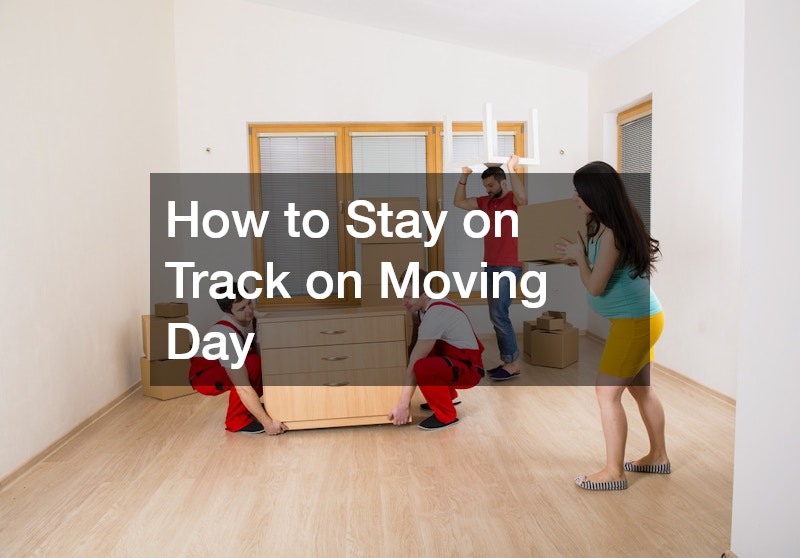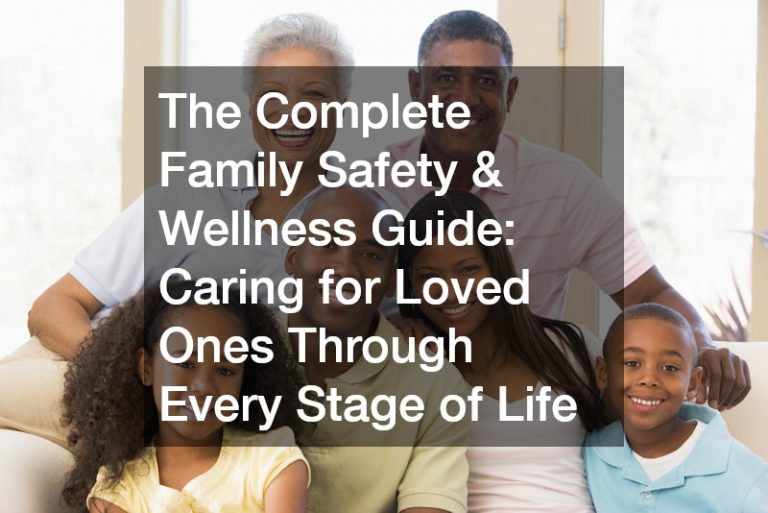Moving to a new home is often regarded as one of the most stressful life events a person can experience. From coordinating logistics with a moving company to ensuring packers handle your belongings with care, the entire process requires meticulous planning. However, with the right strategies and guidance, moving and more can be transformed from a daunting task into a manageable experience.
This article offers a comprehensive roadmap to handle the complexities of relocating, ensuring that you not only survive the move but thrive in your new environment. From helping kids adjust to a new routine after the move to setting up essential health services and finding local favorites in your new neighborhood, we cover every aspect you need to consider. By integrating helpful services such as dog daycare facilities or discovering nearby local restaurants, you’ll feel more settled and at home in no time.
Relocation is about more than just transporting possessions—it’s about transitioning your entire lifestyle. That includes quickly establishing access to health care, registering with a new dentist, setting up utilities, and organizing essential home services like garbage collection. It also involves addressing the emotional impact of the move, especially for children and pets, who often feel the disruption most.
Exploring your new area early can make a big difference. Whether you’re seeking a reputable dog trainer or looking for ways to keep your kids active, knowing what’s available helps foster a sense of belonging. With thoughtful planning, moving doesn’t have to be a disruption—it can be the beginning of something better.
How to Start Planning for a Move

When considering a move, the first crucial step is to establish a realistic timeline. Begin by evaluating your current situation and identifying your moving date. This will allow you to map out the weeks or months leading up to the move, ensuring that you and your family are adequately prepared.
Creating a detailed checklist is another key step in planning a move. A checklist not only helps you stay organized but also allows you to track progress as you complete essential tasks. Whether it’s calling a moving company for initial quotes or compiling a list of items that need special packing, a checklist is indispensable.
Lastly, budgeting for your move is vital. Factor in costs associated with hiring packers, transportation fees, and any unexpected expenses that might arise. By understanding the financial requirements involved in moving and more, you’ll ensure a smoother transition to your new home.
Getting Ready to Relocate Without the Stress
One of the main sources of stress when moving is the concern over the safety of your belongings. Hiring a reputable moving company that provides experienced packers can significantly alleviate this worry. Professional packers are trained to handle everything from fragile items to bulky furniture, ensuring everything arrives in perfect condition.
Beyond hiring professionals, decluttering before the move is a crucial way to prevent stress. By sorting through your belongings and deciding what to keep and what to donate or dispose of, you not only reduce the moving load but also simplify unpacking at your new home. This step can make a remarkable difference in how organized you feel throughout the moving process.
Moreover, effective communication with your moving company is key to managing stress. Clear up any uncertainties by asking questions and confirming details like movers’ arrival time, the estimated duration of loading and unloading, and the services included in the package. In the domain of moving and more, clarity is your ally.
Helping Kids Adjust to a New Routine After the Move
Moving to a new home is especially challenging for children, as their routine undergoes a significant change. To ease their transition, it’s important to involve them in the process. Encourage them to pack their favorite toys or decide on the decoration of their new room, making the move feel like an adventure.
Enrolling them in activities such as a local karate school can also help them adjust. New extracurriculars offer children an opportunity to make new friends and develop a sense of belonging in their new community. It not only keeps them engaged but can also serve as a fantastic outlet for any stress or anxiety they might experience.
Communication plays a vital role in helping kids acclimate after a move. Regular family meetings to discuss their feelings and experiences about the change can offer emotional support. By understanding their concerns, parents can better address them, making the concept of moving and more a positive experience for the whole family.
Setting Up Essential Health Services in Your New Neighborhood

One of the most important steps in settling down after a move is finding reliable health services. Start by locating a general dentist for routine check-ups and emergency care. Ensuring your family’s dental health is taken care of will relieve any lingering anxiety related to healthcare access in your new area.
Besides dental services, find a primary care physician or clinic nearby to handle all general medical needs. Familiarize yourself with their services and office hours to avoid any last-minute complications. Establishing these healthcare connections is indispensable when it comes to moving and more.
Don’t forget about your furry family members when setting up health services. Locate a veterinarian or animal hospitals that offer comprehensive pet care and ensure your pets’ medical records are transferred. This will guarantee immediate care when needed, offering peace of mind in your new neighborhood.
What to Do First When You Have Pets in a New Place
Moving can be a bewildering experience for pets. To help them adjust, allow them to explore their new home slowly. Familiar scents, like their bed or favorite toy, can provide comfort and a sense of familiarity amidst new surroundings.
Schedule a health check-up at a local veterinarian soon after settling in. This will not only ensure their health is up to date but also acquaint them with the new healthcare setting. Having a trusted vet nearby is crucial in navigating the complexities of moving and more with pets.
Lastly, research animal hospitals in your new area that can handle emergencies. Knowing the location of a 24-hour animal hospital provides a safety net, especially during the initial weeks in a new place when uncertainties may arise. Preparation in this regard is undoubtedly key to a smooth transition for your pets.
Making Sure Your Pup Feels at Home Too
Helping your dog feel at home after a move is crucial for their well-being. Initially, maintain their usual routine as much as possible, incorporating familiar activities like walks or playtimes. Consistency will reassure them amidst the hustle of moving and more.
Consider using a dog daycare service during the unpacking process. This ensures that your dog remains active and engaged while you’re busy settling in. It offers them a chance to socialize with other dogs, aiding their adaptation to the new environment.
As your dog gets accustomed to their new surroundings, gradually introduce them to the neighborhood. Short exploratory walks can help them familiarize themselves with local scents and sounds. This approach slowly broadens their comfort zone, making the transition smoother and more enjoyable for your furry friend.
Getting Home Services in Order for After the Move

Another essential step when settling into a new home is setting up necessary home services. Garbage collection is often a primary concern, and finding out the schedule is essential for maintaining a clean, organized home environment. Contact your local municipality to learn about waste disposal policies specific to your neighborhood.
Additionally, if you moved into a home requiring lawn and garden maintenance, it’s prudent to arrange for these services at the earliest. A well-kept yard not only enhances curb appeal but also integrates you more seamlessly into your neighborhood.
Don’t overlook setting up utility services promptly. Ensuring your water, electricity, heating, and internet services are operational from the start is crucial for a comfortable transition. These elements create an immediate sense of normalcy that contributes to the overall moving and more experience.
Tips for Managing an Energetic Dog After a Big Move
Dogs can be particularly restless during and after a move, so managing their energy is paramount. Engage them in structured playtimes or walks, encouraging behaviors that keep them stimulated and grounded. These activities offer a healthy outlet for their exuberance.
Consider hiring dog trainers who specialize in acclimating pets to new environments. These professionals can offer guidance on managing behavior, ensuring that your dog comfortably transitions into their new surroundings. Their expertise can be particularly valuable in establishing obedience and reducing anxiety after moving.
Regularly visiting local dog parks also helps manage your dog’s energy. In such spaces, they can socialize with other dogs, providing both excitement and calming familiarity in your new location. This step, coupled with others, ensures a comprehensive approach to navigating a move with pets.
Finding Local Favorites Fast in Your New Neighborhood
Once you’ve settled into your new environment, exploring local restaurants can enrich your moving experience. Quick outings to nearby eateries are a fantastic way to get acquainted with local tastes and community culture. Sampling the dining options available lets you discover new favorite spots quickly.
Join neighborhood social media groups or forums to get recommendations and insights into the best local restaurants. These platforms are abundant with information from locals who know the area well, offering valuable tips on must-try places. Being part of the community online can offer a wealth of information on moving and more.
Don’t hesitate to explore beyond dining. Whether it’s local shops, libraries, or recreational centers, immersing yourself in the broader community will establish a sense of belonging. The sooner you feel connected to your new neighborhood, the smoother your overall relocation journey will unfold.
How to Stay on Track on Moving Day

Staying organized on a moving day is crucial for ensuring everything goes off without a hitch. Assign specific tasks to family members or helpers, ensuring that roles are clear and everything is accounted for. Communication remains pivotal, so keep all parties informed about the day’s schedule.
Use labels effectively on moving boxes for easy identification. This small but crucial step can significantly reduce the chaos associated with unpacking. Clear labels help prioritize unpacking essentials first, easing you into your new home.
Finally, keep essential items, such as toiletries and favorite snacks, at hand for quick access amidst the moving boxes. Maintaining small comforts and personal necessities nearby can help reduce stress and provide a bit of normalcy throughout the moving experience.
Relocating may seem overwhelming, but with thoughtful planning and the right support systems, it becomes far more manageable—and even rewarding. As you’ve seen throughout this guide, successful moving isn’t just about getting from point A to point B. It’s about creating a stable foundation for your next chapter, one that includes everything from household logistics to emotional well-being.
By starting early, choosing trusted movers and packers, and budgeting for essential services, you can greatly reduce last-minute stress. Staying organized throughout the process—especially on moving days—helps you maintain control, even when the unexpected arises. Just as importantly, acknowledging and addressing the needs of your family members and pets creates a smoother transition for everyone involved.
Once you arrive, settling in means more than unpacking. It’s about connecting—with your new neighborhood, new service providers, and new routines. Setting up health care, exploring local dining spots, and establishing pet care gives your new location the familiarity and comfort of home. Whether you’re navigating garbage collection schedules, enrolling your child in a karate class, or introducing your dog to local trainers and parks, each small step contributes to building a life in your new surroundings.
Above all, remember that moving is a process. It may take time to feel fully at home, and that’s okay. Each checklist item you complete, every connection you make, and each day that passes helps ease the transition. With patience, preparation, and the right resources, your move can be more than just a relocation—it can be a fresh start. By embracing the many aspects of moving and more, you’re not just changing your address—you’re opening the door to new opportunities.




